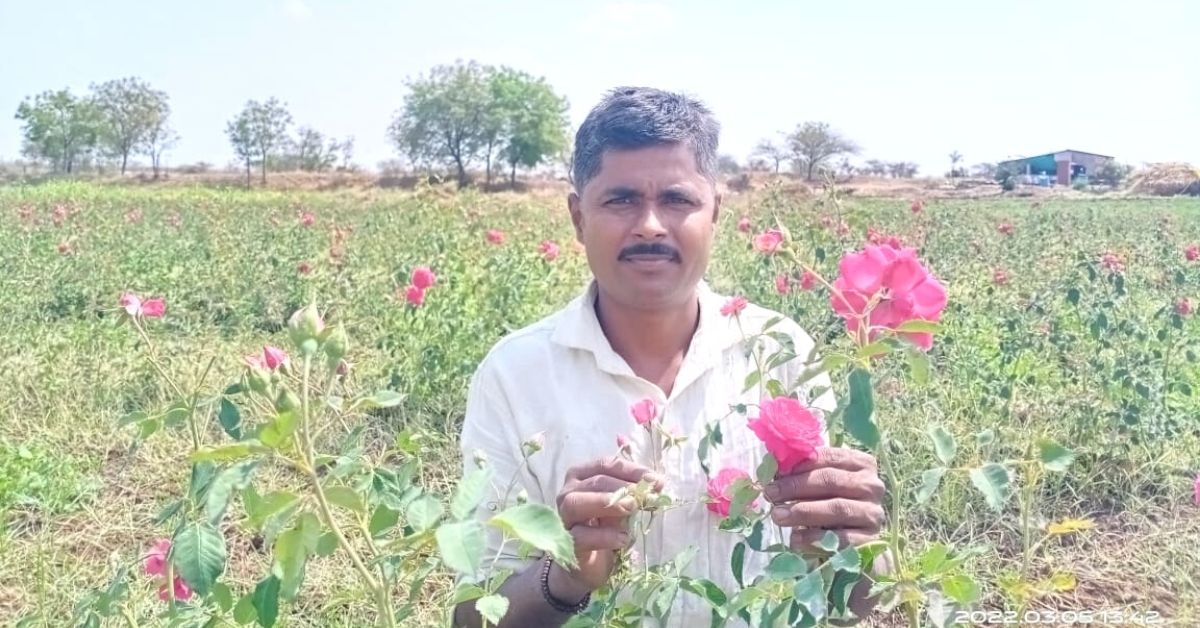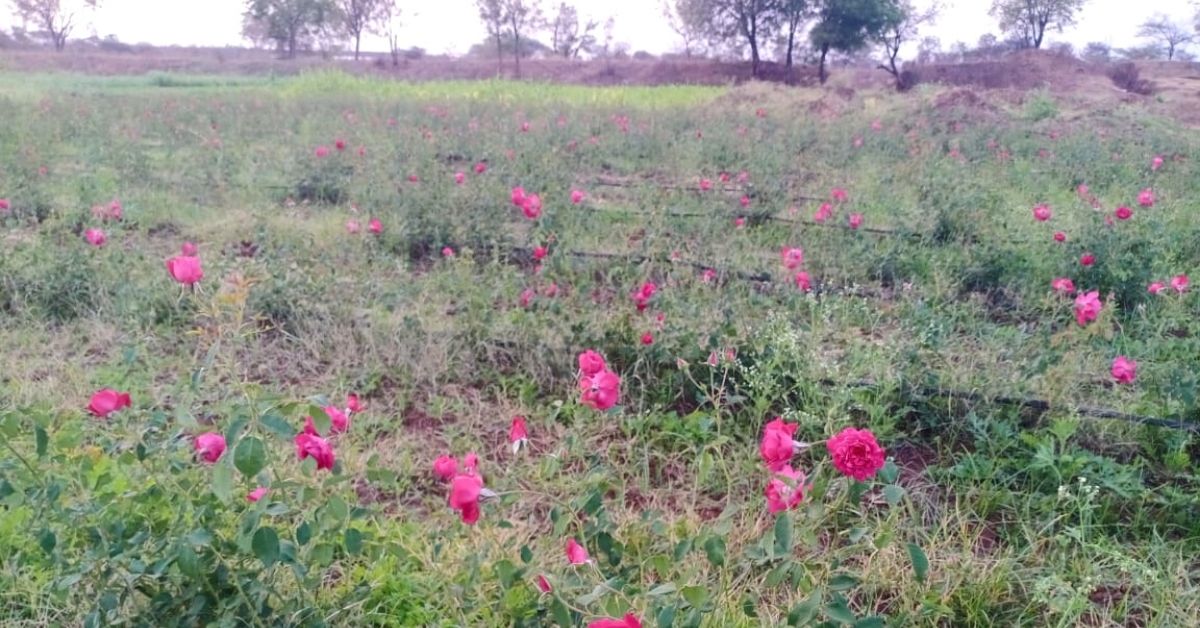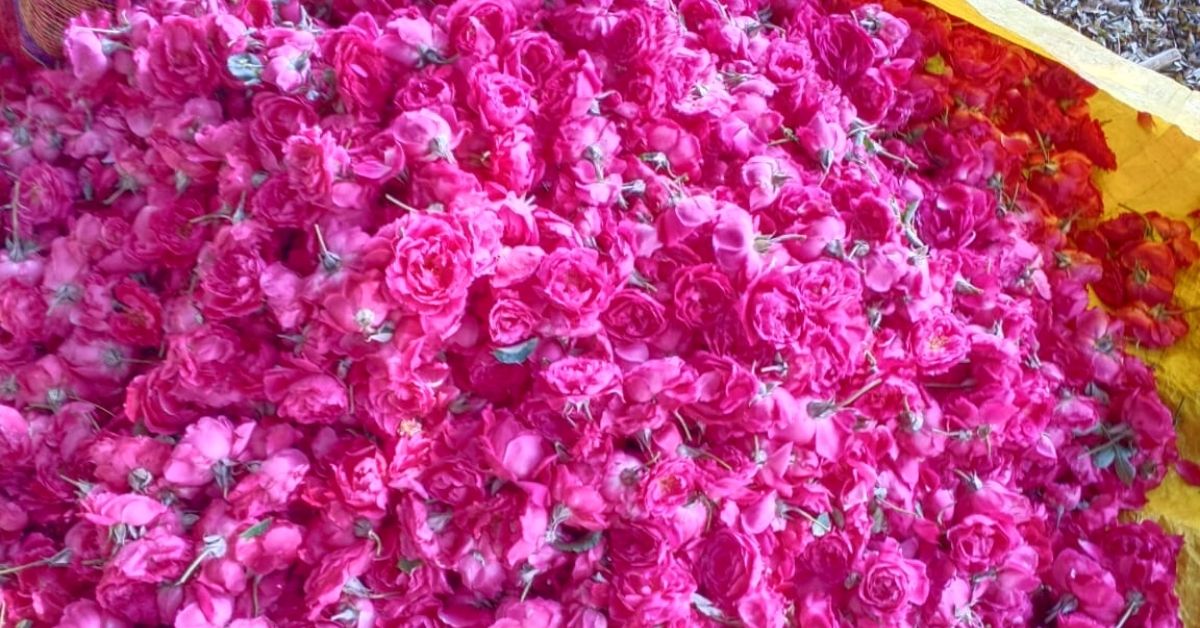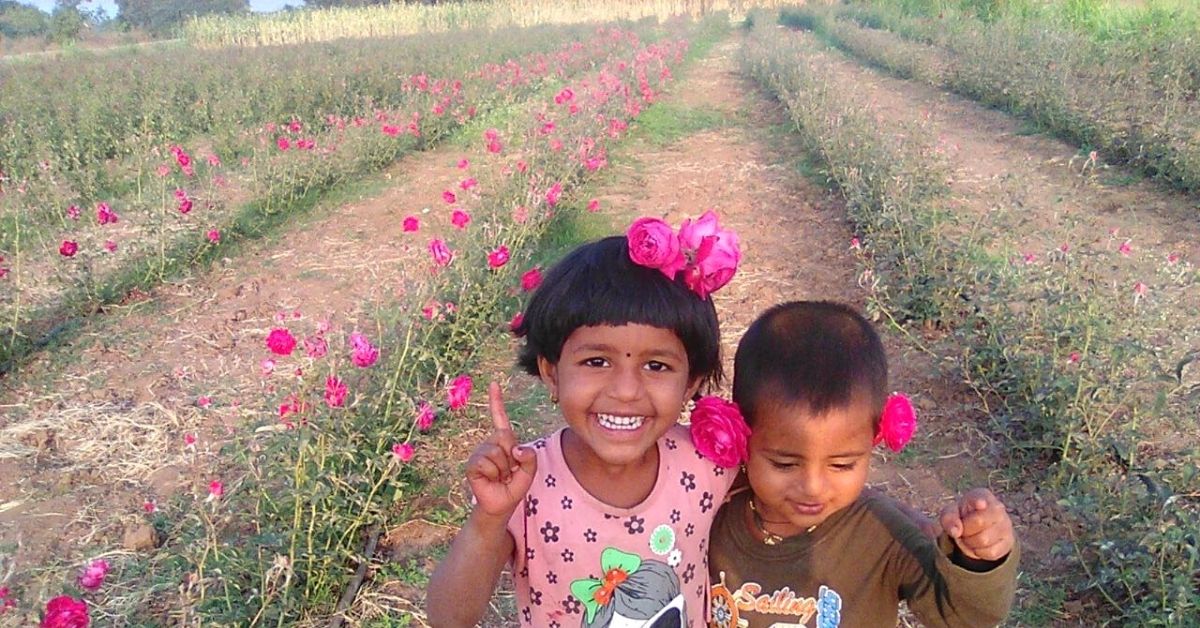Despite Acute Water Shortage, Farmers Innovate & Earn Lakhs Growing Roses
In the drought-prone village of Wadji, Maharashtra, an FPO of about 400 farmers has found a brilliant solution to their water woes. With rose farming, not only are they seeing their lands flourish, but also selling their products far and wide across India

To the rest of the world, the rose is a symbol of love, beauty and courage. But to residents of Wadji village, located in Maharashtra’s Solapur district, it’s a representation of their success, despite living in one of the most drought-prone regions of the state.
“Roses have made us lakhpatis,” says Kunlik Kumhar, one farmer from the village.
Solapur, which falls in a rain shadow region, faces severe rain shortages. As Kundlik explains, farming here is rife with challenges, and often, residents have to travel for miles to fetch water. Bachelors suffer because brides refuse to migrate to the water-scarce region. “Moreover, a majority of farmers would grow sugarcane, which is a water-intensive crop. Farming was tough as profits dwindled, and the number of crops was limited,” he tells The Better India.
But over the years, the tide has turned. For each acre of their rose farm, these farmers earn lakhs, and their products are sold far and wide across India. Kundlik narrates how the village farmers banded together to make this happen.
The fragrance of success

The severe water crisis in their village forced Kundlik and other farmers to think of a different approach to farming. Around 20 farmers approached an official of the Agricultural Technology Management Agency (ATMA), a state government scheme that aims to assist farmers in progressive agriculture.
“We brainstormed over the number of alternative crops that could be adopted. During one of the discussions, a farmer shared a case study of another farmer pursuing rose farming,” Kundlik says.
He adds, “In 1989, a farmer from a neighbouring village, Pinjarwadi, brought a grafted rose plant. He used the sapling to propagate and gradually create a rose farm. He was not successful as expected, but could sustain the farm with less water.”
This inspired the farmers in Wadji to follow suit. “It seemed like a practical alternative as rose plants do not require much maintenance. The water requirement is considerably low,” he says.
Moreover, Solapur and its neighbouring districts are pilgrim destinations, which see a footfall of hundreds of thousands of devotees throughout the year. Anticipating lucrative market opportunities, the farmers began rose cultivation.
“I started on 0.25-acre land using chemical methods of farming, which earned me a price of Rs 4 per kilo. On religious occasions, the prices scaled up to Rs 15 a kilo,” he says.
Alongside Kundlik, other farmers who adopted floriculture began seeing a boom in business, which allowed them to scale up farming, he says. With this, rose farms across Wadji increased to spread over 100 acres. “Apart from local markets, we targeted buyers in Mumbai, Telangana and Bengaluru. We put roses in ice packs for preservation and sent the packages by trains,” he says.
In 2012-2013, the farmers approached the Pune market. “We faced heavy resistance from traders and middlemen, as our rose quality was superior and received significant demand from buyers. They feared that we could create a monopoly in the market and shut their businesses. Moreover, the middlemen started demanding more commissions,” he notes.

The farmers opposed the dominance of traders, and on occasions, the heated arguments took a violent turn. Eventually, these rose farmers were cut loose from the Pune market.
By then, the area in which farmers were cultivating roses had increased to 350 acres. “Production was happening on a large scale, and we needed reliable markets to sell our produce. Hence, we again approached ATMA officials for guidance,” he says.
Kundlik says the official suggested they process the flowers into rose water, gulkand, essence and other products. The officer also promised to train the farmers with marketing skills.
The farmers approached distillers in the area to learn the process. “The mechanism for distilling rose water is similar to the process of making alcohol. We also tried other raw methods such as using a pressure cooker and procuring used alcohol making units. But all experiments failed. The pressure cooker blew up when rose petals choked the whistle, while the alcohol making units used to distil rosewater added alcohol essence to our products,” he says, adding, “We travelled to Uttar Pradesh to learn the technique from attar makers. We returned with an iron vessel with a capacity to distil 500 litres a day.”
However, the iron vessel turned rusty, and the farmers realised they had been cheated.
“We had spent a significant amount of money and almost a year exploring opportunities. We eventually put our ventures on pause due to lack of money and skills. We almost went broke in the process,” Kundlik says.
The relentless farmers then knocked on the doors of the Krishi Vigyan Kendra, which suggested they form a Farmer Producer Organisation (FPO).
In April 2015, about 25 farmers came together to start the FPO, which today has 382 members. “We obtained necessary certifications and set up Sri Khandoba Agro Producer Company Ltd, which enabled us to cut off the middlemen and directly sell to customers. Besides roses, we also started growing and selling seasonal vegetables such as bitter gourd, bottle gourd, tomato and others using funds from a World Bank project,” he says.
Towards an organic life
Parmeshwar, a biotechnology postgraduate and chairman of the FPO, says, “The farmers started earning considerable profits by 2017 and collectively decided to install a rosewater making unit. By now, we could afford to buy an industrial machine worth Rs 3 lakh.”

“The farmers harvest the roses early in the morning and sell them in the market during the season. During the off-season, the profits reduce, and farmers store the roses, dry the petals and sell them to companies that make pan masala, incense sticks and other such products in UP and Gujarat,” he says.
Today, the collective enterprise earns farmers profits of Rs 2 to 3 lakh per acre, selling a quintal of rose every day.
Kundlik says their success has attracted many visitors, students and farmers from across the country. “We feel proud when people visit us to take lessons from our struggle. Once I visited my school to deliver a lecture on farming, which was quite overwhelming. We also enjoy media attention when they publish our success story,” he says.
Meanwhile, Parmeshwar says, a few farmers have also moved to organic rose farming. “A cluster of 50 farmers is now part of the initiative. They sell organic roses in weekly markets, and aim to create awareness about organic farming. Eventually, we all plan to move towards toxin-free farming,” he adds.
He says the farmers are now planning to buy solar drying machines to reduce the expenses incurred from electrical usage. “Solar-dried vegetable and rose petals have increasing demand in the food market, and we wish to tap the opportunity,” he adds.
Edited by Divya Sethu
If you found our stories insightful, informative, or even just enjoyable, we invite you to consider making a voluntary payment to support the work we do at The Better India. Your contribution helps us continue producing quality content that educates, inspires, and drives positive change.
Choose one of the payment options below for your contribution-
By paying for the stories you value, you directly contribute to sustaining our efforts focused on making a difference in the world. Together, let’s ensure that impactful stories continue to be told and shared, enriching lives and communities alike.
Thank you for your support. Here are some frequently asked questions you might find helpful to know why you are contributing?


This story made me
-
97
-
121
-
89
-
167











